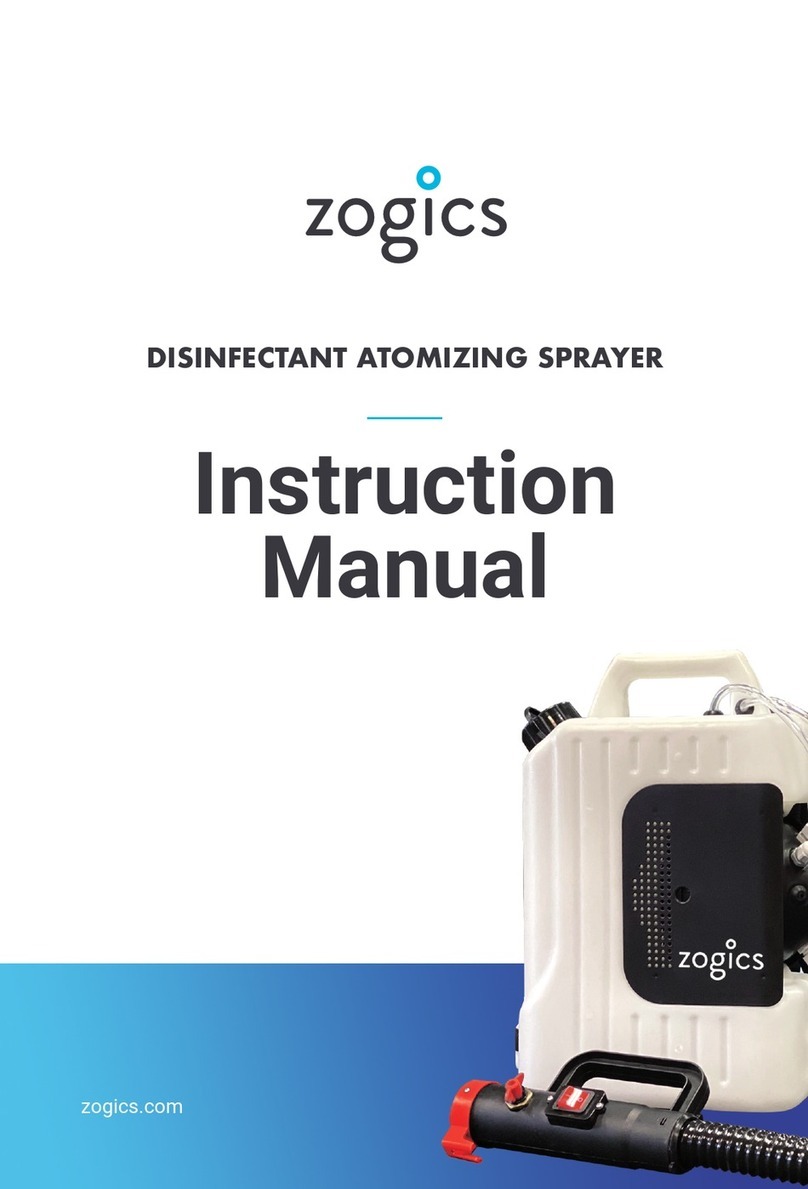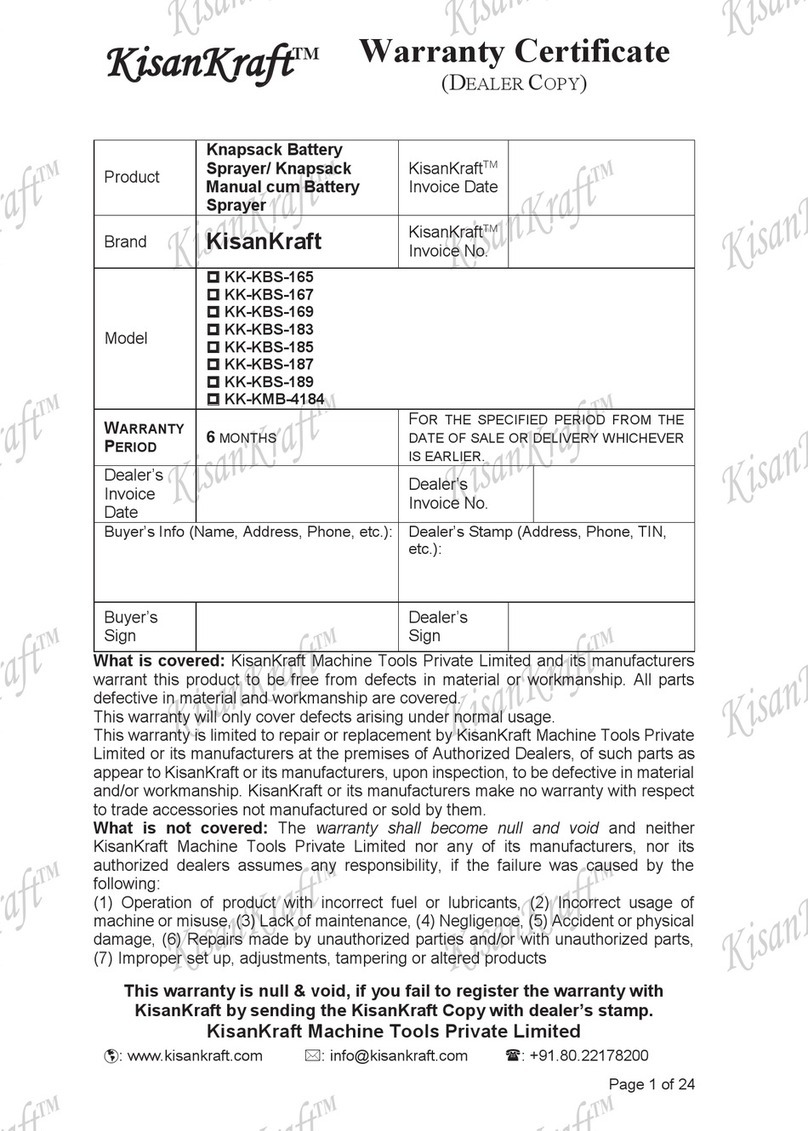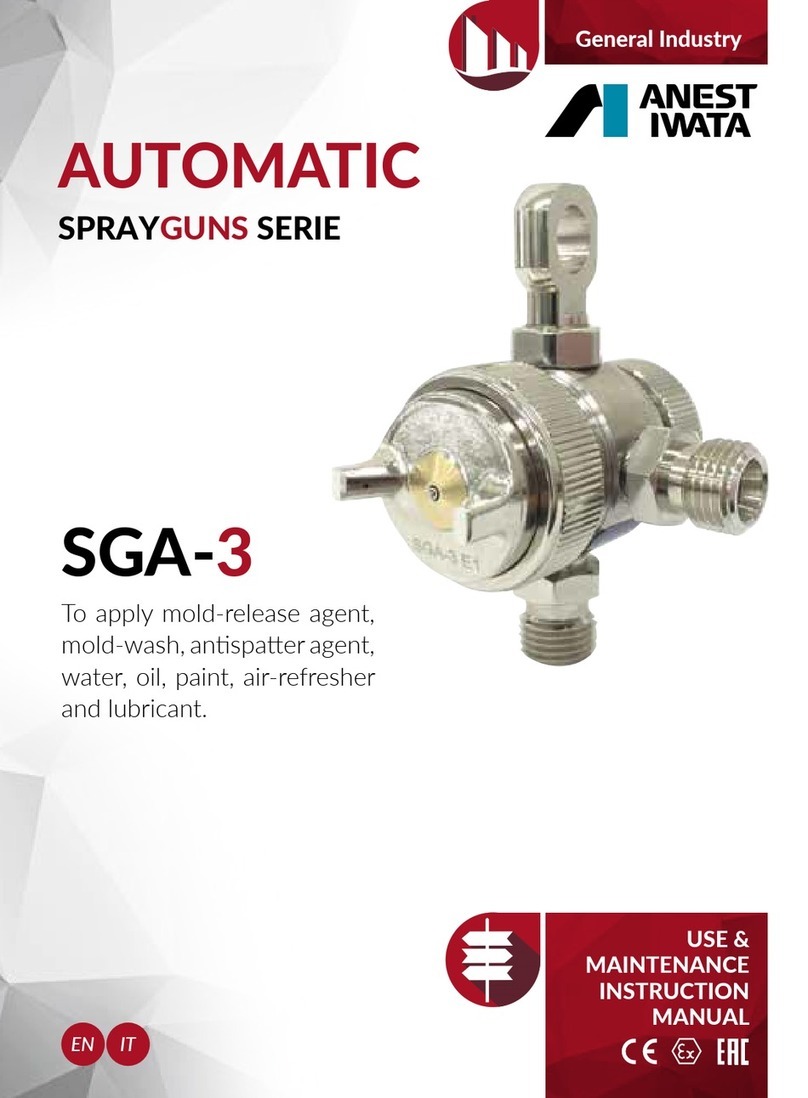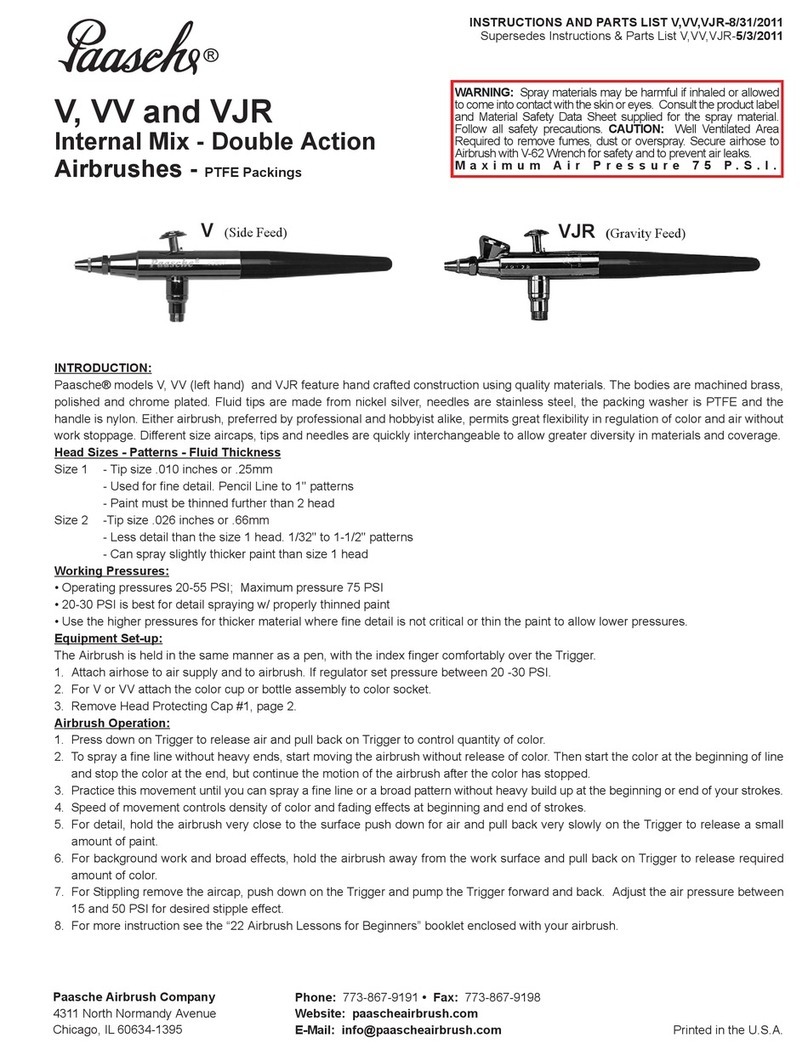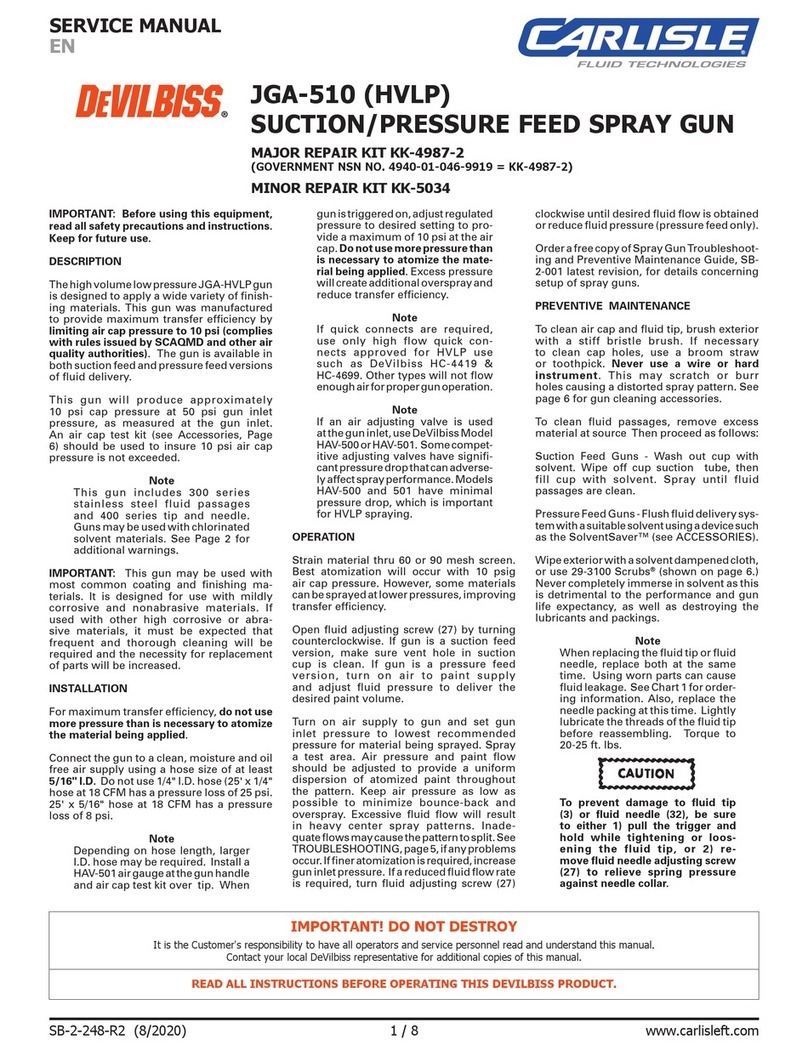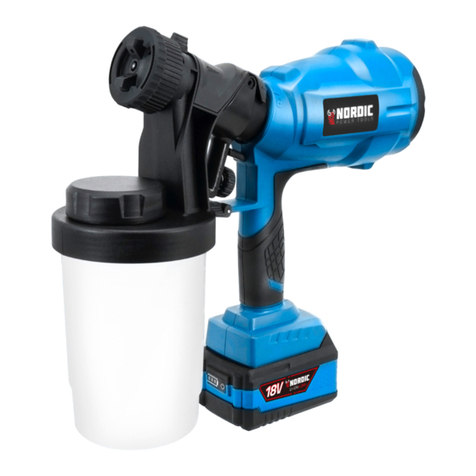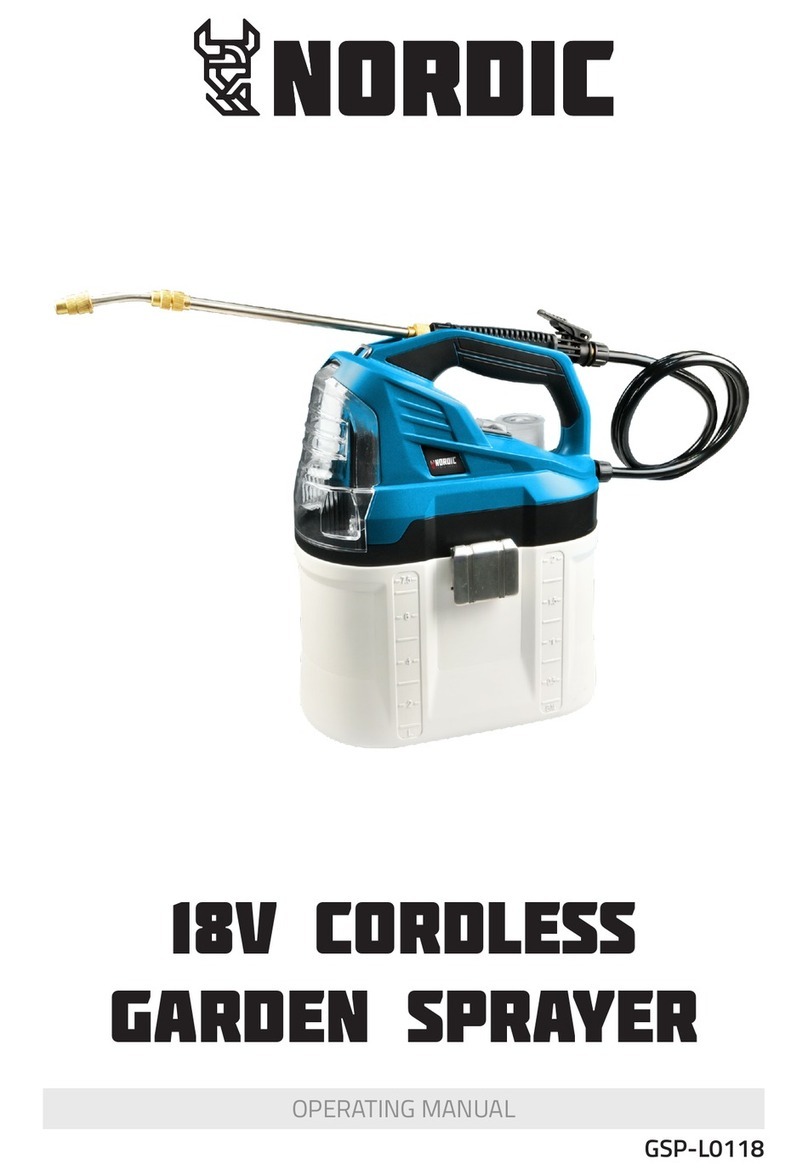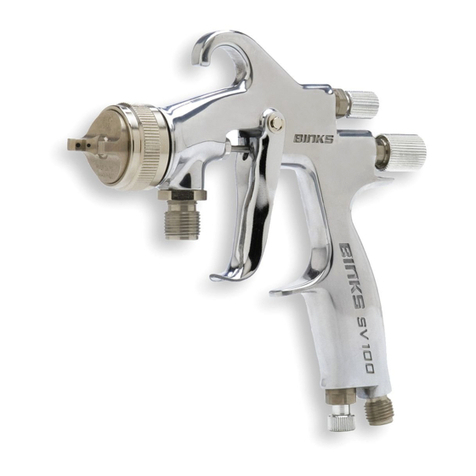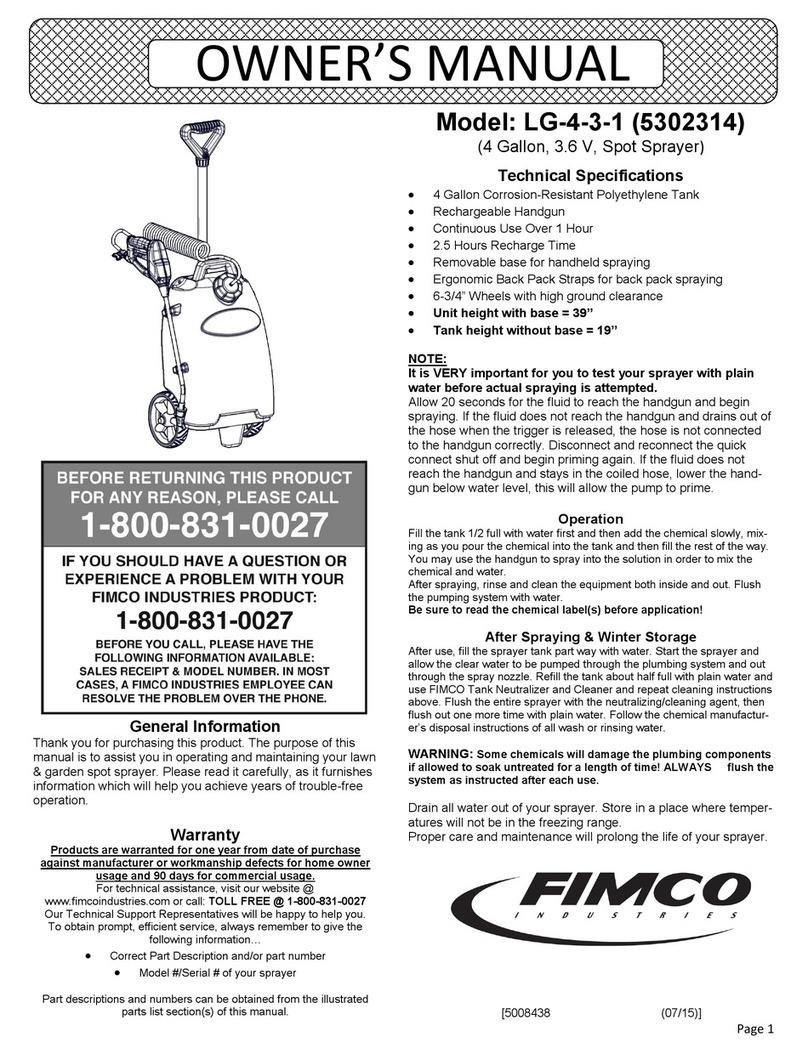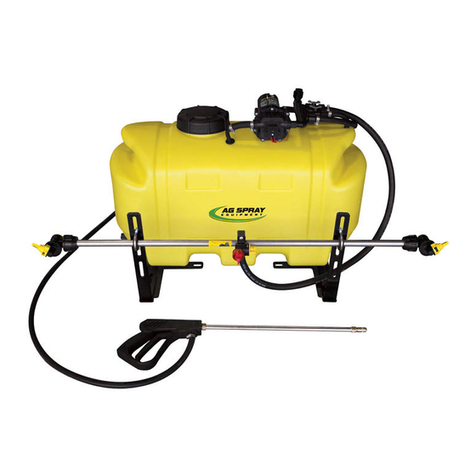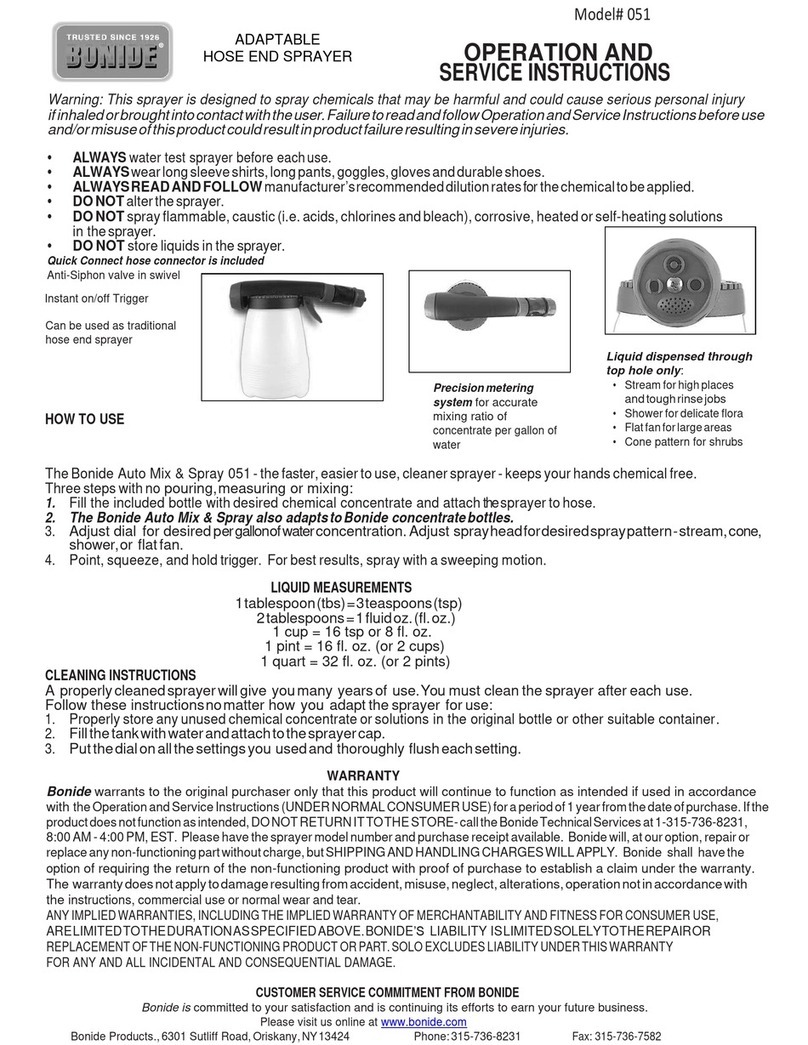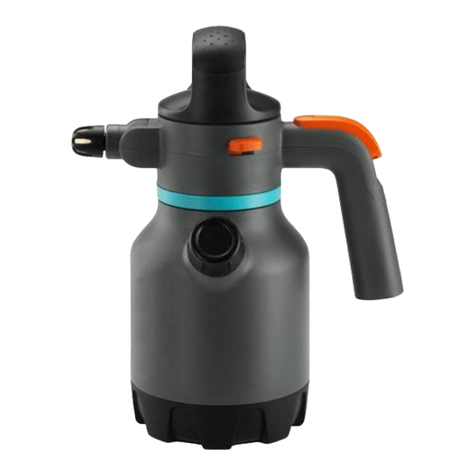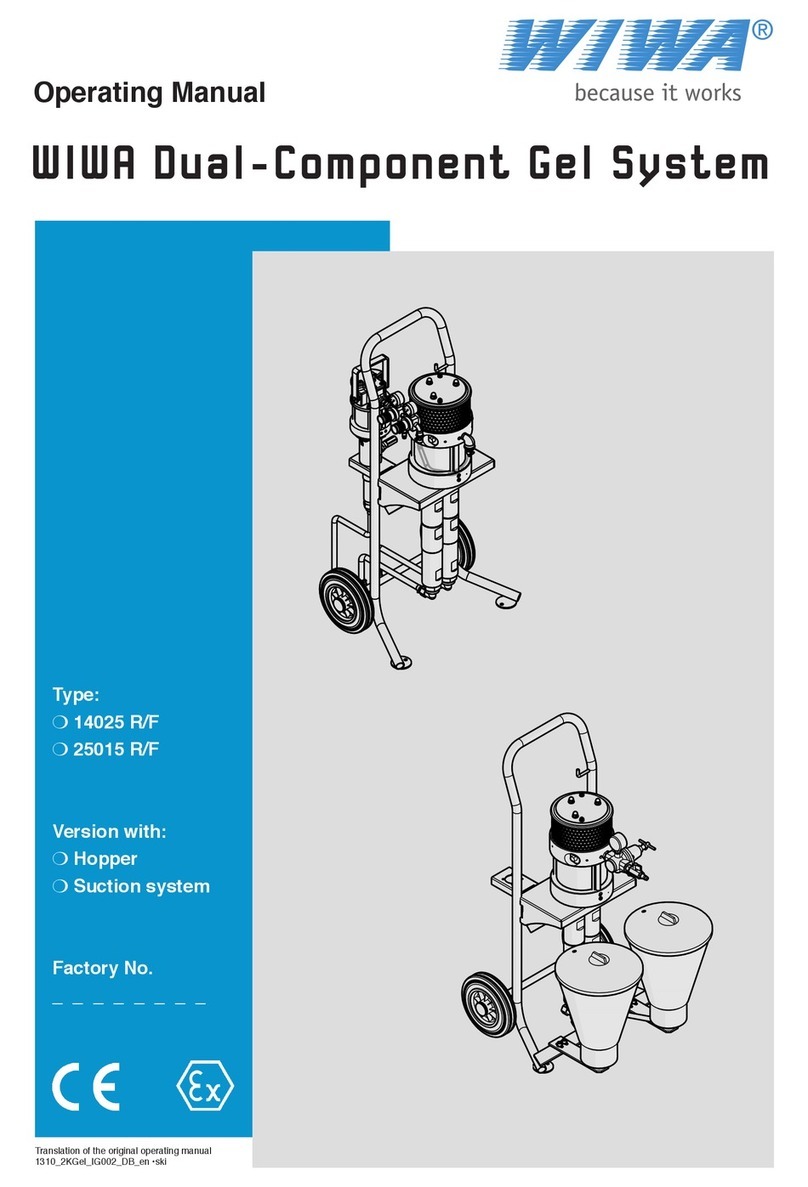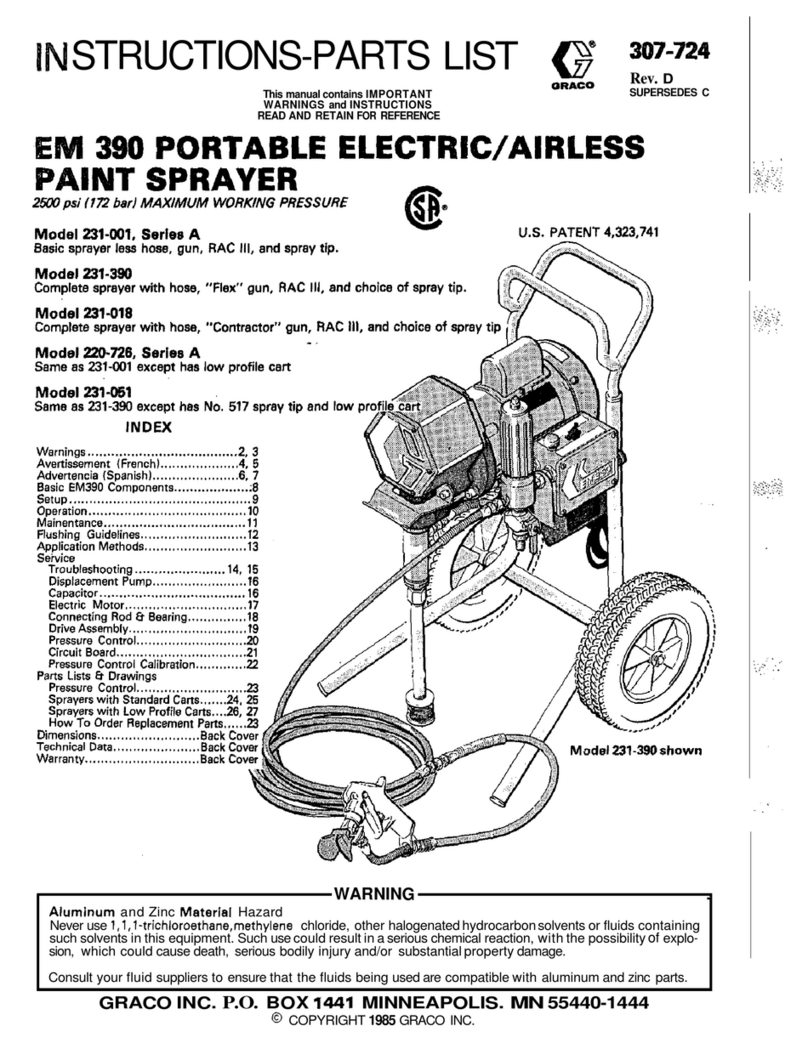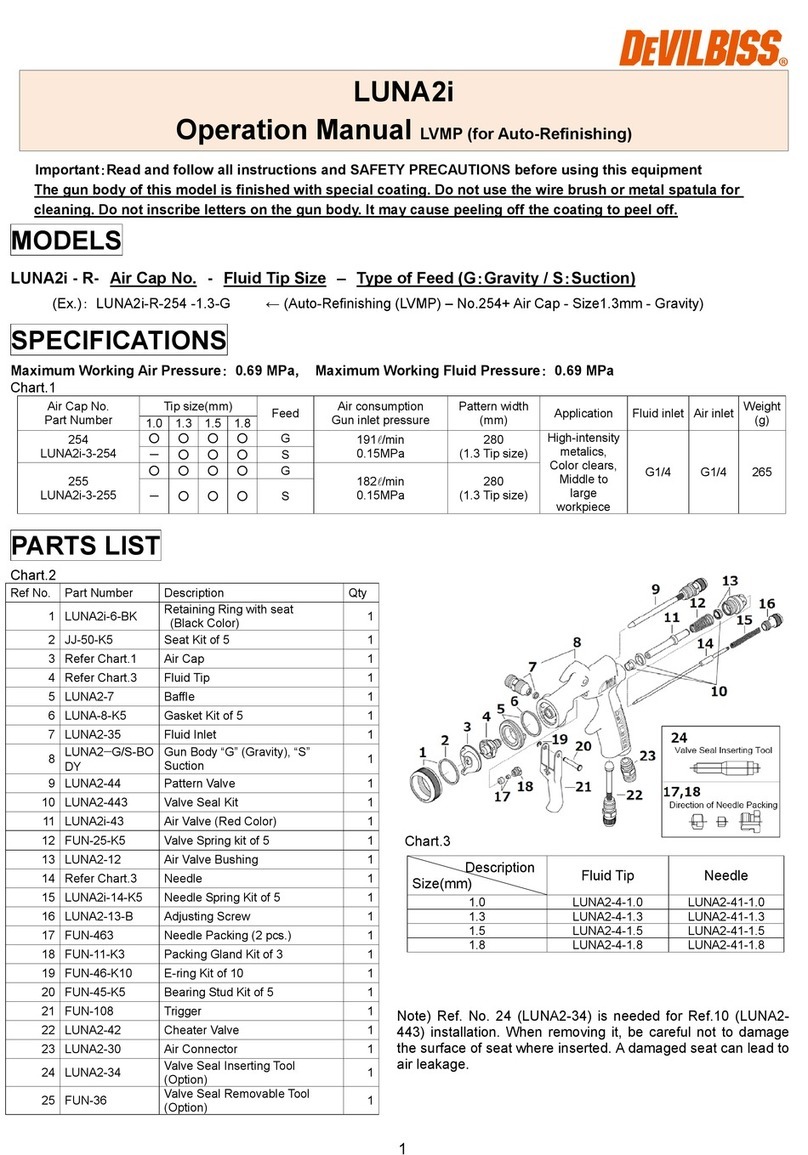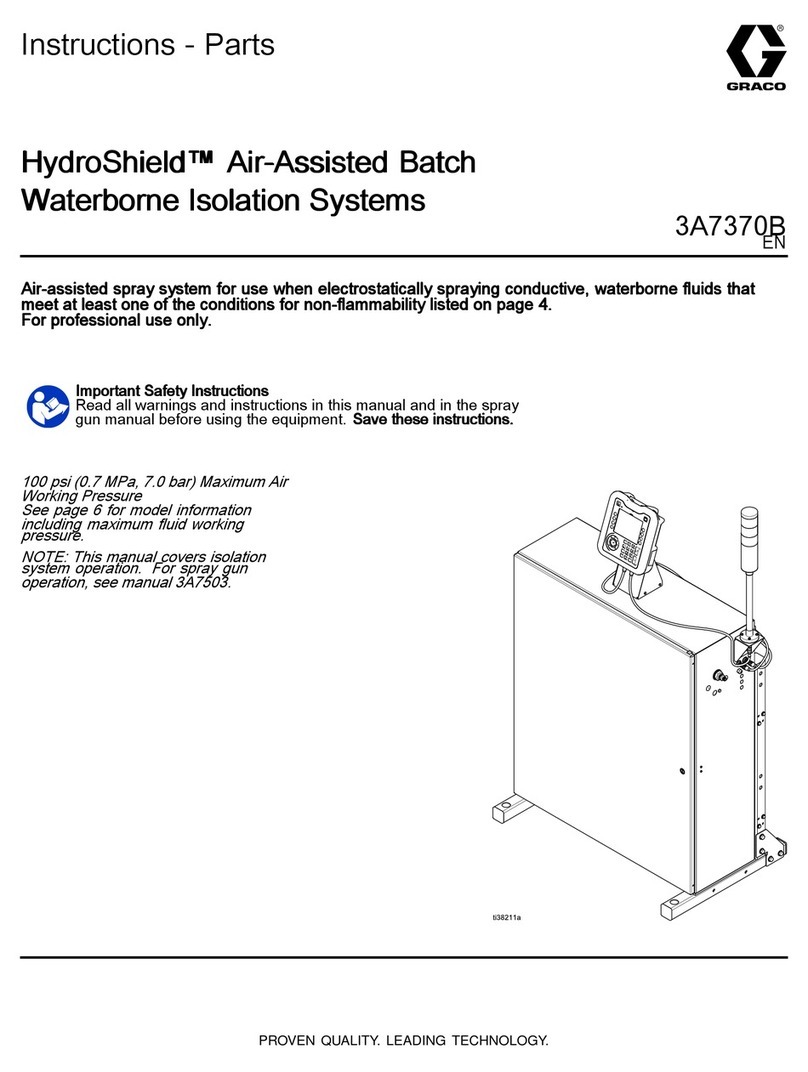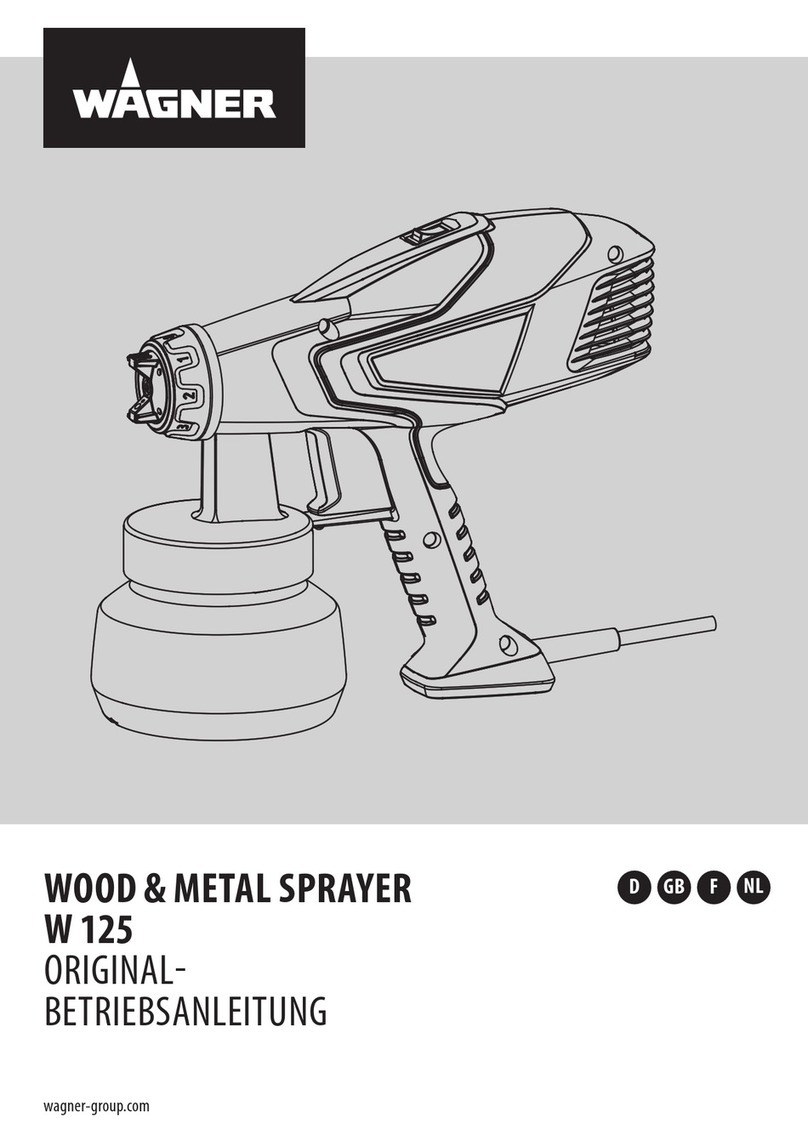
6
NORDIC
• compounds in fertilizers;
• compounds in insecticides, herbicides, and pesticides;
• arsenic and chromium from chemically treated lumber.
Follow directions on containers of all such products. To reduce your exposure to these chemicals, wear
approved safety equipment such as face masks that are specially designed to filter out sprays, gloves,
and other appropriate protective equipment.
• Before using any pesticide or other spray materials in this sprayer, read the label on its original container thoroughly
and follow its directions. Some spray materials are dangerous and should not be used in this sprayer, as they can
damage the sprayer and cause serious bodily injury or property damage.
• Electric shock hazard. Never spray toward electrical outlets.
• Do not use commercial grade chemicals or chemicals for commercial or industrial purposes. Use only consumer
grade water-based lawn and garden chemicals.
• Do not pour hot or boiling liquids into the tank. These can weaken or damage the hose or tank.
• Spray area must be well ventilated.
• Avoid spraying on windy days. Spray can be accidentally blown onto plants or objects that should not be sprayed.
• Store the sprayer in a secure, well-ventilated indoor space with the fluid tank empty.
• Do not use caustic (alkali) self-heating or corrosive (acid) liquids in this sprayer. These can corrode metal parts or
weaken the tank and hose.
• Know the contents of the chemical being sprayed. Read all Material Safety Data Sheets (MSDS) and container labels
provided with the chemical. Follow the chemical manufacturer’s safety instructions. using the sprayer. Clean after
each use.
• Do not smoke while using the sprayer, or spray where spark or flame is present.
• Risk of injection. Do not discharge directly against skin.
• To reduce the risk of electric shock, do not put the sprayer into water or other liquid. Do not place or store the
sprayer where it can fall or be pulled into a tub or sink.
• Maintain this product. Thoroughly inspect both the inside and outside of the sprayer and examine the components
before each use. Check for cracked and deteriorated hoses, leaks, clogged nozzles, and missing or damaged parts. If
damaged, have the product repaired before use. Many accidents are caused by poorly maintained products.
• Disconnect the battery from the unit before draining, cleaning, or storing the sprayer. Such preventive safety
measures reduce the risk of accidental starting.
• Always wear eye protection with side shields or goggles marked to comply with ANSI Z87.1. Failure to do so could
result in fluids entering your eyes resulting in possible serious injury.
• Protect your lungs. Wear a face or dust mask when using the sprayer. Following this rule will reduce the risk of
serious personal injury.
ADDITIONAL SAFETY INSTRUCTIONS
FOR BATTERIES AND CHARGERS
